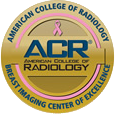
Patient-Centered Services
Image-guided Wire Localization
This image-guided procedure is used to give the surgeon a way to accurately locate an area of concern such as a small nonpalpable tumor so that it can be removed with as small a scar as possible. When requested, the wire localization is performed at the Breast Center of Acadiana on the day of the scheduled surgery. The area of concern is located by mammography or by ultrasound and targeted with the imaging. The radiologist cleans the breast with a disinfectant and then uses an injection of local anesthetic to make the area numb and the procedure painless. The radiologist then places a thin rigid needle into, or directly alongside, the area of concern. A thin flexible wire with a hook at the tip is then placed through the needle into the targeted area. The hook keeps the wire in the appropriate place without moving. The needle is removed, and the localizing wire which passes up through the skin is ready for the surgeon to follow to the targeted area. Mammogram views are taken to verify the location of the wire. The wire is taped to the skin, and the patient takes her film with her to check in to the surgery facility.
Ultrasound-guided Cyst Aspiration
This is a simple procedure in which the radiologist inserts a thin needle into a breast cyst to drain it. Most cysts in the breast can reliably be determined to be benign and are safe to leave alone without draining. However, some cysts are painful or are large enough to be bothersome, and cyst aspiration is done for relief if requested by the patient. Sometimes a cyst has an appearance which cannot be reliably assessed as benign, and cyst aspiration is done to prove that there is no cancer. The cyst is located and targeted using live real-time ultrasound imaging. The radiologist cleans the skin and usually uses an injection of local anesthetic to make the area numb and painless. Once the needle is observed to be in the cyst, suction is applied and the fluid within the cyst is removed completely, or almost completely. Almost always there is no need for testing of the fluid. Rarely the fluid, or the characteristics of the cyst, requires testing to look for cancer cells. Once aspirated there is a slight chance that the cyst may recur and need to be drained again.
Ductogram (Galactogram)
A ductogram is a procedure which uses a watery contrast solution containing iodine (X-ray dye) to see the lining of the duct and identify polyps in the duct. This test is done to evaluate a suspicious nipple discharge. The patient lies on her back, and the radiologist uses a lighted magnification tool to examine and clearly see the duct openings on the nipple. The radiologist will squeeze the nipple to express the discharge to identify and target the duct opening which is the source of the discharge. A tiny blunt-tipped cannula is placed into the duct, and several drops of the contrast is gently injected to fill the duct. Several mammogram views are then taken to show the highlighted duct and to evaluate for the presence or absence of any abnormality. Many times an ultrasound is also done. Sometimes the ability to find and cannulate the duct is unsuccessful (about 1 out every 6).
